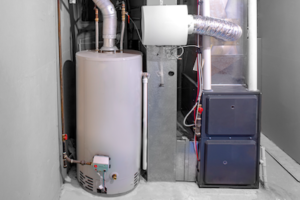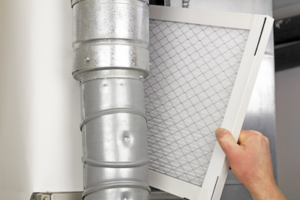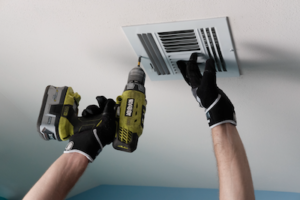How to Look After Your Furnace
As winter approaches and the chill blows through the house, no doubt you think about your home’s furnace and its condition, if you have one. Since most furnaces typically last 15-20 years, this makes taking care of them vital. As it is can cost you a lot of money if the furnace is damaged, clogged, needs repairs, or needs to be replaced. However, if you ignore the proper maintenance, a furnace will not last that long. So if you are wondering, how to look after your furnace and avoid damages? Here is how to maintain your furnace:
- Replace or Clean Furnace Filter
- Maintain the Furnace Blower
- Maintain the Furnace Burner
- Maintain and Clean the Furnace Air Ducts
So, now that you have an idea of how to look after your furnace, let’s examine the importance of maintaining your furnace and how to do so in greater detail.

What Is the Importance of Maintaining Your Furnace?
There are many reasons why maintaining your home furnace is important. First, a furnace that is not properly maintained is likely to break down more frequently, which can be both expensive and inconvenient. Additionally, a poorly-maintained furnace is less efficient, meaning it will cost you more money to operate. Finally, neglecting your furnace can result in serious safety hazards, such as carbon monoxide poisoning.
Just by taking the time to regularly inspect and clean your furnace, you can avoid these costly and dangerous problems. Additionally, regular maintenance will help to prolong the life of your furnace, saving you money in the long run. So now that you know why maintaining your furnace is so important, let’s get into the things you can do to look after your furnace.
I. Replace or Clean Furnace Filter
The furnace filter is like a guard to the safety of the furnace parts. Its filter traps airborne dust, small particles, and pet hair from the furnace’s inner components and thus prevents damage and blockage. As you continue using your furnace, the more the filter blocks dirt and particles, which leads to a buildup of fluff and debris on the filter. This gunk ends up limiting the airflow from and into your furnace.
A guideline is to check your furnace filter every 30 to 90 days and clean it (if it is a permanent filter) or replace the filter. The cleaning or replacement will improve the furnace’s performance of blowing hot air for your joy and comfort.
How to Change the Filter:
- First, Switch Off the Furnace and Wait For It to Cool Completely
- Remove the Filter and Blow Out or Vacuum the Dust and Fluff Off the Filter
- Wipe It Off With a Damp Cloth and Let It Completely Dry Before Inserting It Back Into the Air Vent
- If the Filter Is Replaceable, Dispose of the Old One and Insert a New One Into the Vent
A clean filter without debris will save energy costs as it will not require extra heat to function as it should. Thus you get to spend less on your heating costs.

II. Furnace Blower Maintenance
If you do not know, a furnace blower is a device that helps circulate warm air through your home during the winter. The blower is responsible for moving the hot air from the furnace to the rest of the house. So, how do you know if the furnace blow motor is working well?
The blower (blow motor and fan) functions well when it blows hot air into your home through the air ducts. The hot air generated by the furnace needs help to get into the air vents and forced through by the blower.
Why is it crucial to maintain the furnace blower? For one, when the blower stops working, your furnace will not warm the room, as the heated air cannot get into the vents. Therefore without a blower, your furnace would not be able to effectively heat your home.
How Will You Know Your Blower Needs Repair?
1. Little or No Airflow Comes Out of the Vents
- This lack of sufficient airflow means that you constantly try to adjust your thermostat to get the correct room temperature.
2. To Heat Your Rooms, You Keep Paying Higher Heating Bills
3. The Furnace Overheats, and the Limit Switch Triggers Off Frequently
4. When Using the Furnace You Hear Squealing, Screeching, Rattling, Banging, and Knocking Sounds
- Screeching and Squealing Noises: this can show that the blower needs lubrication
- Rattling and Banging Noise: a serious sign that your blower needs attention or is broken and needs replacement
Blower Wheel
An essential part of the blower motor is the blower wheel. When it becomes greasy, it slows down its rotation, which reduces the amount of air blowing through the air ducts. Consider having this wheel every 3 to 5 years.
Unless you have full knowledge of how to repair the furnace blower, it is prudent to get a professional to conduct the furnace repair to avoid further damage to the blower motor.
III. Furnace Burner Maintenance
The burner is another essential component of your furnace. The burner is where fuel and air ignite to produce flames or heat. Why maintain the burner? Without the burner, the furnace will not produce heat for warming up your home.
How Do You Know Your Burner Needs Repairs?
When it produces a cracking sound, rustling produces low heat or clogged.
How to Maintain the Furnace Burner:
1. First, Switch Off the Furnace and Let It Cool Down
2. Remove the Combustion Chamber Door
3. Remove the Burner Cover, Turn the Thermostat On and Inspect the Flame From the Burner
- The Flame Should Be Constantly Blue
- Yellow Flame – Means That the Burners Are Clogged and Need Cleaning
4. With a Small Wire Brush, Remove the Debris From Each Burner
- Inspect the Inside of the Burner
- Remove Carbon Deposits Inside the Burner
- Then Blast Compressed Air Through It
5. Brush Off Dirt from the Transition Wings
- Transition Wings – the tiny ducts that let flames move from one burner to the other
6. Once Complete, Test the Burner Again to See If It Gives Off a Steady Blue Flame
7. Vacuum Off the Areas Around the Burners and Clean Off Any Debris
Experts state it is advisable to call in an HVAC professional to check and clean the burners for you.
IV. Maintain Furnace Air Ducts
The air ducts are the channels for the much-needed heated air that flows through your heating system. Clogged air vents can reduce the flow of heat into your home.
How Do You Know the Air Ducts Need Cleaning?
Low or lack of heat flowing into the rooms. The best way is to check whether each room has the same consistent heated airflow from the vents. If the air is inconsistent, it might mean that some of the air ducts might need cleaning. Do you smell some weird odors from the air vents? Are the vents blowing dusty air into your home? These are signs that your air flues need checking, cleaning, and repairs.
How to Clean the Air Ducts:
1. Turn Off the Furnace
2. Using a Screwdriver, Remove the Grills Off the Vents
3. Clean the Vents with Warm Water, a Brush, and Soft Soap and Then Dry Them
4. Using a Brush, Knock Off the Loose Dirt From the Side of the Ducts
5. Then Vacuum the Air Vents to Suck Up the Dust Within Reach
6. Then Re-Inspect the Duct and Wipe Off the Walls Using a Damp Cloth or Paper Towels
7. Change the Air Filters in the Return Duct and Replace the Vent Grilles
8. Switch On the Furnace and Let It Run for 20 to 30 Minutes
9. Then Check the Heat from the Vents In Each Room
- This Is to See If It Is Consistent and Does Not Produce Any Dusty Air

When you inspect the ducts and find construction items, large objects, or dead vermin, it is best to request a professional technician for advice. The professional will inspect and clean the ducts.
Conclusion
In summary, this was our guide of how to maintain your furnace in your home. Now you should know the common signs that your furnace needs to be repaired, requires maintenance, or should be replaced. As well as how it is important to clean the air ducts every 90 days and perform regular maintenance every one to five years, as advised by professionals. This is because heating costs are expensive, especially if you are using a damaged furnace to maintain the heat in your home. So, this is why sustaining regular maintenance at intervals will help to prevent costly repairs for furnace repairs now and into the future. Thanks for reading!
Related Questions
What Are the Common Signs That My Furnace Needs Repair or Maintenance?
As discussed before, the common signs that occur when your furnace needs to be repaired include:
- An Increase In Heating Bills
- Unusual Furnace Stench
- Lack of Good Air Quality
- Lack of Consistent Heat
- Furnace Refusing to Start or Is Irregular
When Should I Replace My Furnace?
While a furnace can last around 15 to 20 years, if your furnace is older than 15 years old, you should consider replacing or buying a new furnace.
